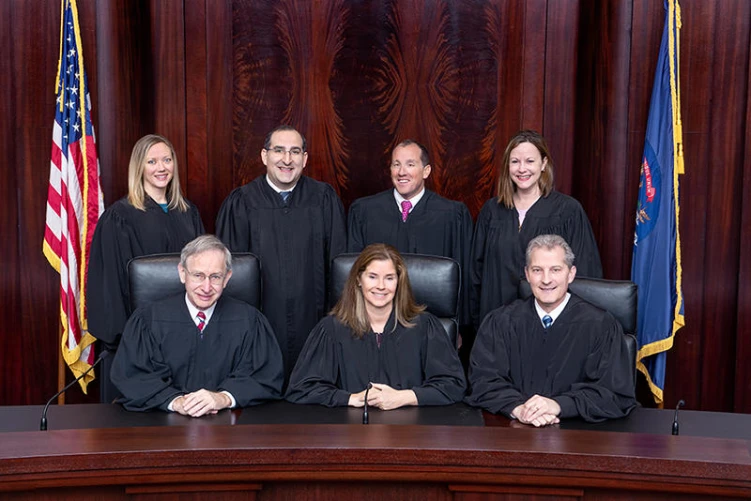In an era where staying connected is more critical than ever, rooftop cell tower leases have become a pivotal aspect of urban landscapes. This article explores the legal nuances of these leases, providing property owners and telecommunications companies with essential insights. With increasing reliance on mobile connectivity, understanding these legal aspects is vital to facilitating and maintaining effective telecommunication networks.
Key Legal Obligations in Rooftop Cell Tower Leases
Compliance with Zoning and Permitting Requirements
Compliance with local zoning laws and obtaining proper permits are foundational requirements for establishing a rooftop cell tower. Without adherence to zoning regulations, both parties may face legal repercussions, potentially resulting in costly fines or mandatory tower removal. Consequently, working closely with local government authorities is essential to ensure all legal obligations are met prior to development.
For telecommunications companies, understanding jurisdiction-specific zoning ordinances can significantly impact the feasibility and location choice of a cell tower site. Zoning regulations can dictate tower height restrictions, aesthetic considerations, and even acceptable electromagnetic emission levels. Therefore, investing time in understanding these local laws can mitigate future legal challenges.
Property owners must also ensure that any additional permits, such as environmental impact assessments, are completed before signing agreements. Failure to obtain the required permits can lead to project delays and legal complications, which are costly for all stakeholders. Proper due diligence in the permitting phase establishes a solid legal foundation for successful lease execution.
Understanding Lease Termination Clauses
Lease termination clauses in rooftop cell tower agreements outline the conditions under which a lease can be concluded prematurely. It’s imperative for both lessors and lessees to negotiate these terms carefully to prevent misunderstandings and disputes later on. Often, termination can be triggered by breaches in compliance, non-payment, or technological obsolescence.
For property owners, a clearly defined termination clause can offer a safety net against prolonged unfavorable agreements. For instance, if a telecommunications company fails to adhere to safety standards, the property owner might reserve the right to terminate the lease. Conversely, companies may seek flexibility to end leases due to advancements in technology or changes in coverage needs.
How Financial Considerations Impact Lease Agreements
Determining Fair Market Rent
Determining fair market rent for rooftop cell towers involves analyzing geographical demand and potential revenue-generating capacity. This is vital as it determines the overall profitability and attractiveness of a leasing agreement for property owners. Typically, market evaluations are influenced by local competition, site visibility, and technological infrastructure available in the area.
The process often includes consulting with real estate appraisers or using industry data to ascertain competitive rates. Rent evaluations must also consider industry benchmarks and standard escalation rates to ensure continued returns over time. Utilizing these insights can help establish a balanced and agreeable rental rate reflective of the site’s potential utility.
Addressing Revenue Sharing and Escalation Clauses
Revenue sharing models in rooftop cell tower leases offer a collaborative approach to financial agreements, potentially increasing profitability for property owners. Typically, these agreements allow owners to receive a percentage of the revenue generated by the tower, aligning interests with the revenue growth objectives of the lessee. Understanding the terms and mechanisms of revenue sharing is essential to maximizing income potential.
In addition, escalation clauses are crucial for ensuring that rental income keeps pace with inflationary pressures and market variations. Commonly, escalation clauses might involve periodic rent increases tied to inflation indices or scheduled incremental raises. For property owners, these clauses provide a hedge against long-term financial stagnation.
Typical Risks and Liabilities Involved for Property Owners
Assessing Potential Legal Liabilities
Property owners hosting rooftop cell towers face several potential legal liabilities that require a comprehensive assessment. These liabilities may stem from structural damages, tenant neglect, or violations of local ordinances, necessitating robust legal safeguards. Indemnification clauses in lease agreements can alleviate financial exposure by mandating the lessee to assume responsibility in certain scenarios.
Moreover, constant monitoring and auditing compliance with all relevant building codes and safety regulations are vital. Liability prevention also includes ensuring tower installations do not encroach on easements or neighboring properties. Engaging legal counsel familiar with telecommunication leases can aid in identifying and mitigating these risks effectively.
Implementing Safety and Maintenance Protocols
Safety and maintenance protocols are paramount in reducing physical risks associated with rooftop cell towers. Property owners should enforce routine maintenance checks, both structurally and technically, to ensure compliance with safety standards. Comprehensive safety procedures protect the well-being of building tenants and neighbors, limiting legal liabilities.
In addition to scheduled maintenance, implementing emergency protocols in the event of structural failures or adverse weather conditions is essential. Training staff and communicating these protocols effectively can expedite response times, minimizing damage and disruptions. Working collaboratively with telecommunication clients ensures these rigorous protocols meet industry-specific safety standards.
The intricacies of rooftop cell tower leases underscore the importance of thorough legal understanding. As the demand for connectivity grows, so do the responsibilities of navigating lease agreements. Properly addressing key legal obligations, financial considerations, and risk management strategies will ensure beneficial outcomes for all parties involved.




